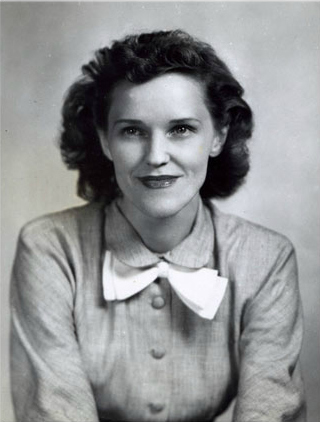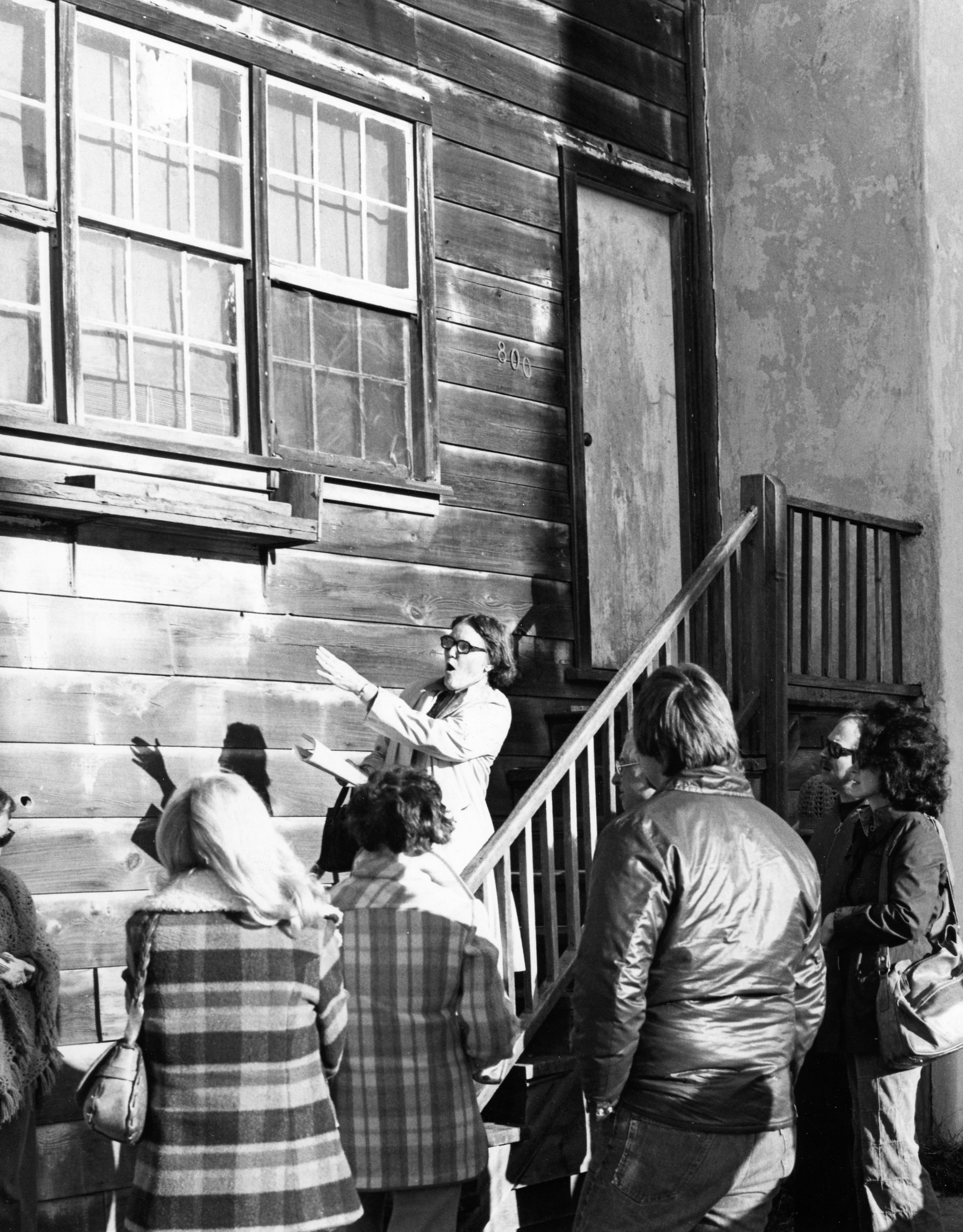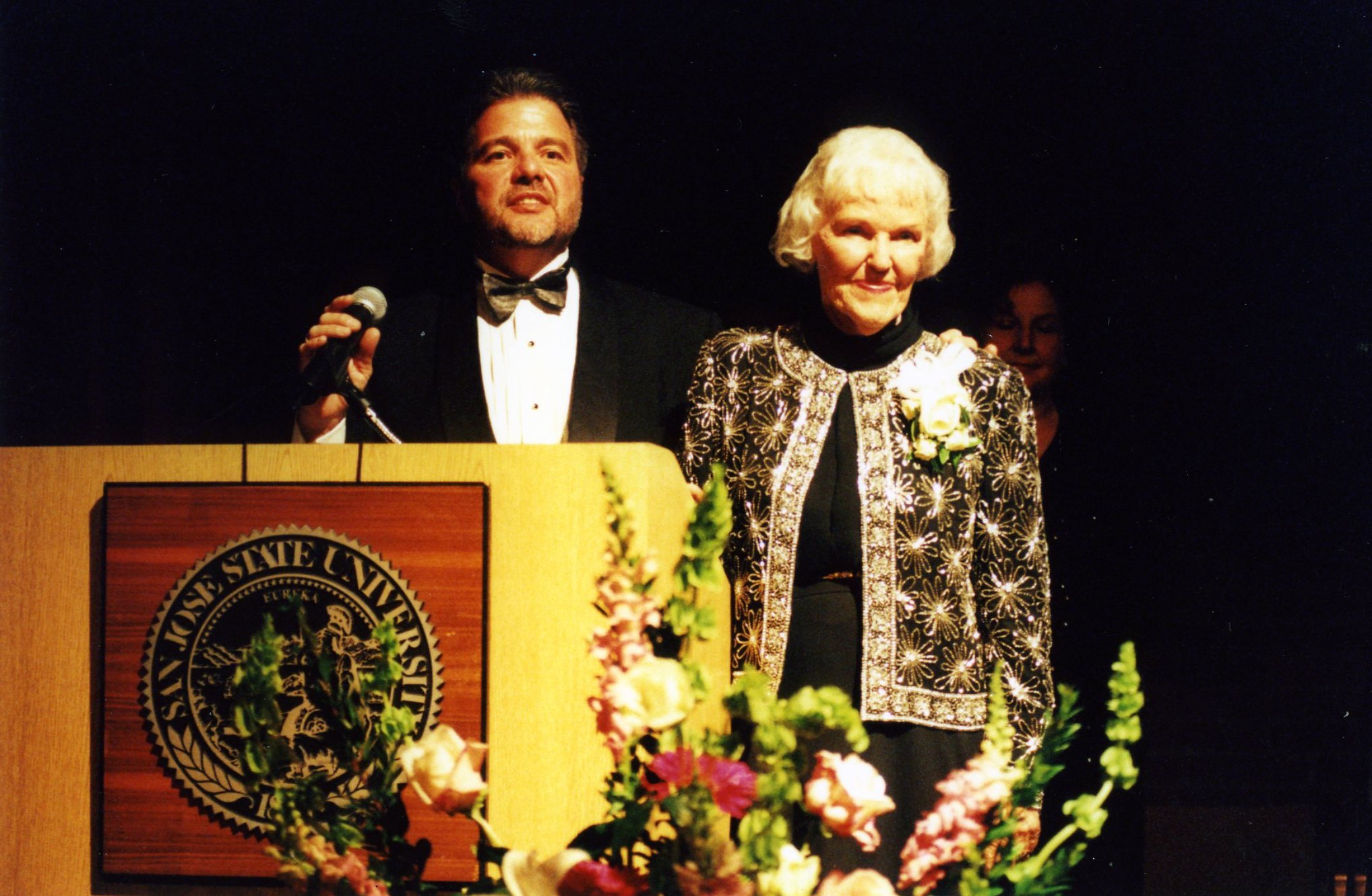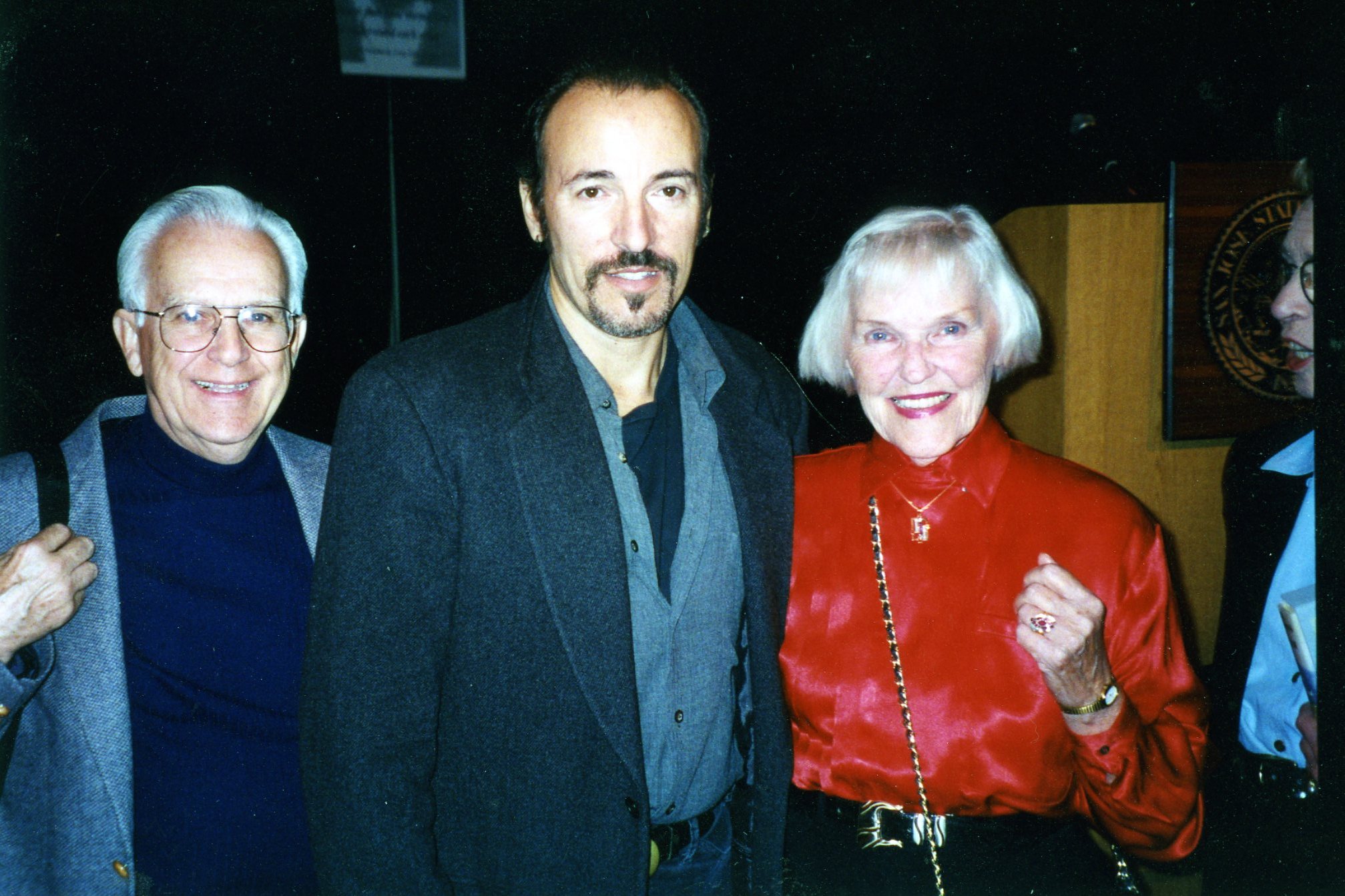
Martha Heasley Cox
SAN JOSE, CA – San Jose State University has received a $4.8 million bequest from the estate of Professor Emeritus of English and Comparative Literature Martha Heasley Cox. The gift will support the Center for Steinbeck Studies that bears her name. Cox’s total lifetime giving to SJSU is $5.5 million, the largest total ever for a faculty member.
“An Arkansas native, Martha Heasley Cox came to California and was immediately taken by the opportunities she found here,” said Provost and Vice President for Academic Affairs Andrew Hale Feinstein. “She dedicated her career to research on one of our region’s most iconic writers, John Steinbeck. Through this work, she sought to inspire a new generation of writers and scholars.”
Shortly after arriving, Cox began collecting Steinbeck materials. The collection grew to become so extensive and well respected that it was incorporated into plans for the Dr. Martin Luther King Jr. Library, opened in 2003. The
Martha Heasley Cox Center for Steinbeck Studies is the only university research archive in the world dedicated solely to Steinbeck’s life and work. Cox was active in Steinbeck Center affairs throughout her 34-year SJSU teaching career and after her retirement. She died in September 2015 at the age of 96.
Impact

Leading a tour of Cannery Row (photo courtesy of Greta Manville).
Professor Cox provided financial support for the collection from the very start, and she continued to do so as the center grew into a multi-faceted organization with many related programs. Her bequest means the center and its work will reach more students than ever before in an array of fields, from humanities and the arts to science and mass communications. For example, the Martha Heasley Cox Steinbeck Fellowships will receive $3.1 million from the bequest.
“Her vision was to bring together a group of scholars drawn from the disciplines Steinbeck practiced—including fiction, drama, journalism and marine biology,” said Nicholas Taylor, Steinbeck Center director and an associate professor of English and Comparative Literature. “Over the last 15 years, SJSU has welcomed 36 writers and scholars to campus, at a rate of two or three per year.”
“The bequest will allow SJSU to expand the program significantly, bringing 10 or more fellows to campus each year,” Taylor said. “Steinbeck Fellows typically visit several classes during their residencies, but with only two or three fellows on campus at a time, the number of students they could reach was limited. Having a larger annual cohort of fellows will allow the program to touch many more students.”
Entrepreneur

Receiving the Tower Award (photo courtesy of the Steinbeck Center).
The bequest will fund two more programs she founded. The Martha Heasley Cox Lecture Series will receive $1 million and the Cox-Manville Steinbeck Bibliography of everything Steinbeck will receive $690,000. Those who knew Professor Cox described her as an entrepreneur of arts and letters, offering a ceaseless stream of ideas on how to grow the Steinbeck collection and use its resources to encourage others to follow in the author’s footsteps.
“Martha made her fortune the old-fashioned way, through hard work as an ambitious academic author and careful investment in stocks and real estate,”
said Paul Douglass, Steinbeck Center director from 2005 to 2012. “A child of the Great Depression, she wanted every dollar, like every moment in life, to count. She was a practical woman who wrote practical books: texts on writing, critical studies and guides for readers, and bibliographies useful to scholars of American literature.”
Martha Heasley was born in Calico Rock, Arkansas, in February 1919. She graduated with a bachelor’s in English from Lyon College, Arkansas, and received her doctoral degree from the University of Arkansas. In 1955, she moved across the country and joined the faculty at SJSU, where she taught for 34 years. She and her husband Cecil Cox divorced but remained lifelong friends. In 2000, she received the Tower Award, SJSU’s highest recognition for service to the university.
“Martha’s case for John Steinbeck was difficult to resist. Her colleagues in the Department of English weren’t exempt from service to the cause,” said Professor Emeritus Arlene Okerlund, who was new at SJSU when she met Cox. The two worked together on pioneering Steinbeck conferences and remained friends in retirement. Cox recruited graduate student Greta Manville, ’75 BA ’78 MA English, to create the Steinbeck bibliography that came to bear both of their names.
Steinbeck Award

With Steinbeck Award recipient Bruce Springsteen (courtesy of the Steinbeck Center).
In 1996, musician Bruce Springsteen reached out to the Steinbeck family with a request: he wanted to name his upcoming album and tour after the “Grapes of Wrath” protagonist Tom Joad. “Professor Cox’s warm relations with Steinbeck’s widow and literary agency led to an inspired idea,” Douglass recalled, the formation of the John Steinbeck Award: “In the Souls of the People.” The award became another way to honor Steinbeck’s legacy while supporting those who were following in his footsteps.
Now a regular fundraiser for the Steinbeck Center, the award brings to campus writers, artists, thinkers, and activists whose work captures Steinbeck’s empathy, commitment to democratic values, and belief in the dignity of people who by circumstance are pushed to the fringes. Recent recipients include civil rights icon Ruby Bridges, novelist Khaled Hosseini and documentary filmmaker Ken Burns.
About San Jose State University
The founding campus of the 23-campus California State University system, San José State provides a comprehensive university education, granting bachelor’s, master’s and doctoral degrees in 145 areas of study with an additional 108 concentrations – offered through its eight colleges.
With more than 32,000 students and nearly 4,370 employees, San José State University continues to be an essential partner in the economic, cultural and social development of Silicon Valley and the state, annually contributing more than 7,000 graduates to the workforce.
The university is immensely proud of the accomplishments of its more than 220,000 alumni, 60 percent of whom live and work in the Bay Area.







